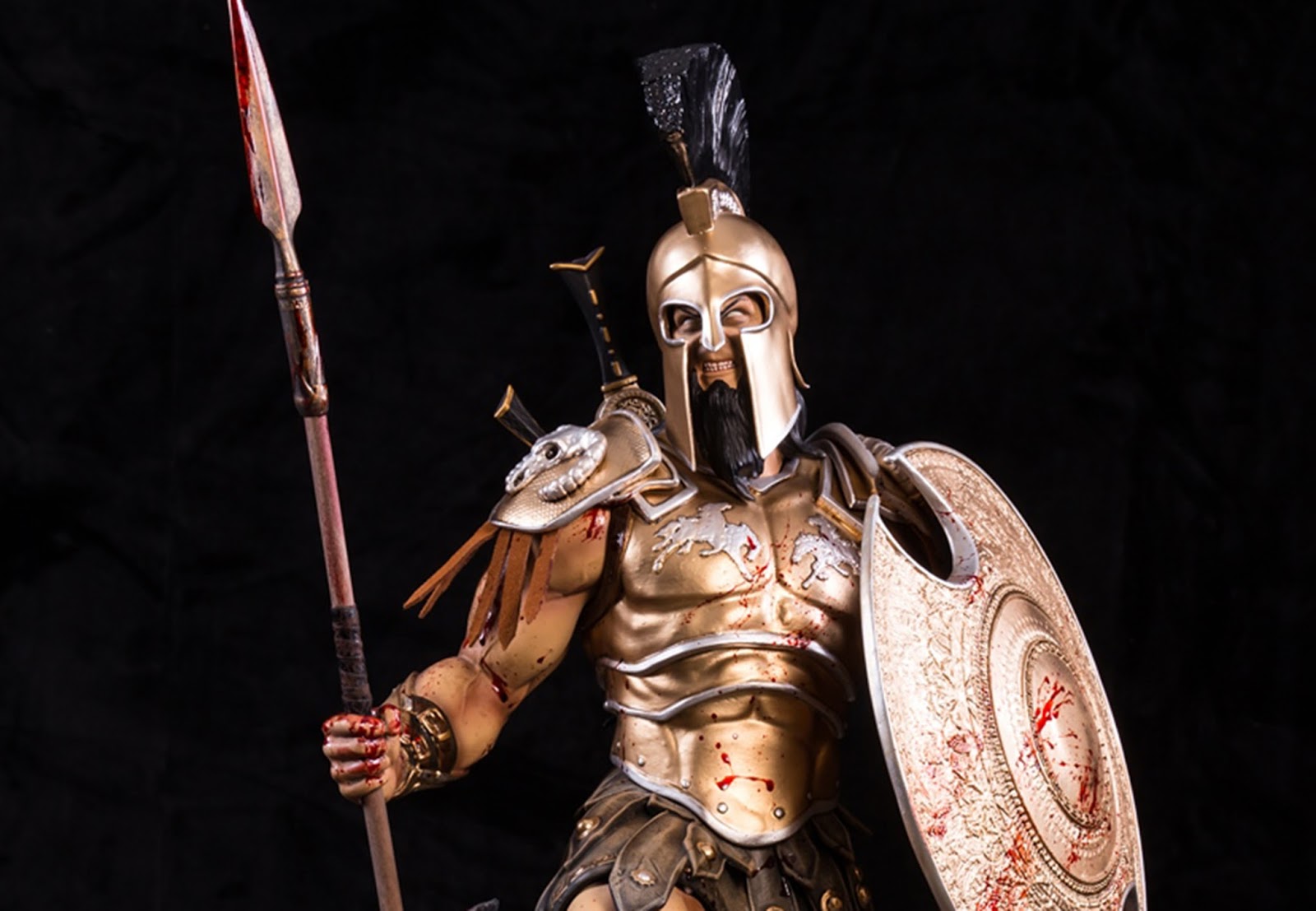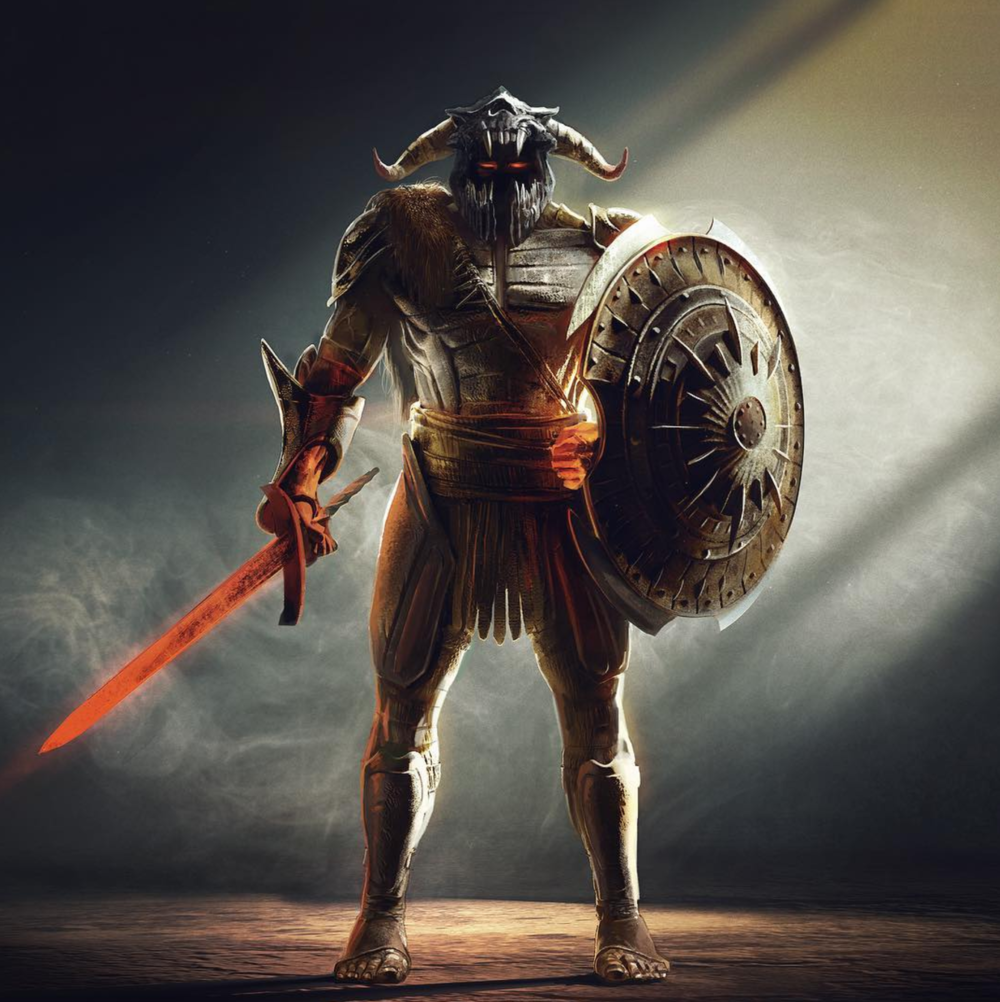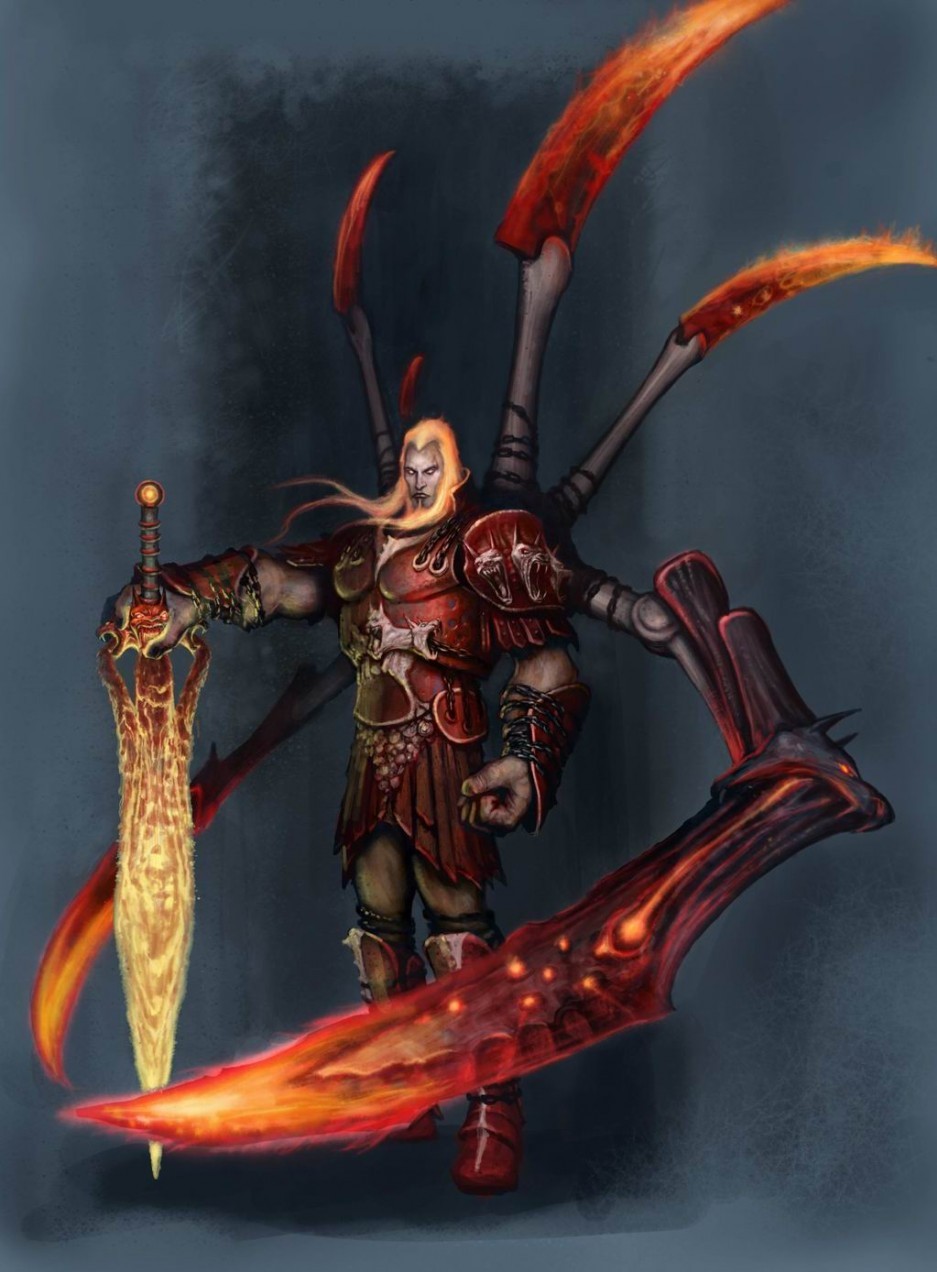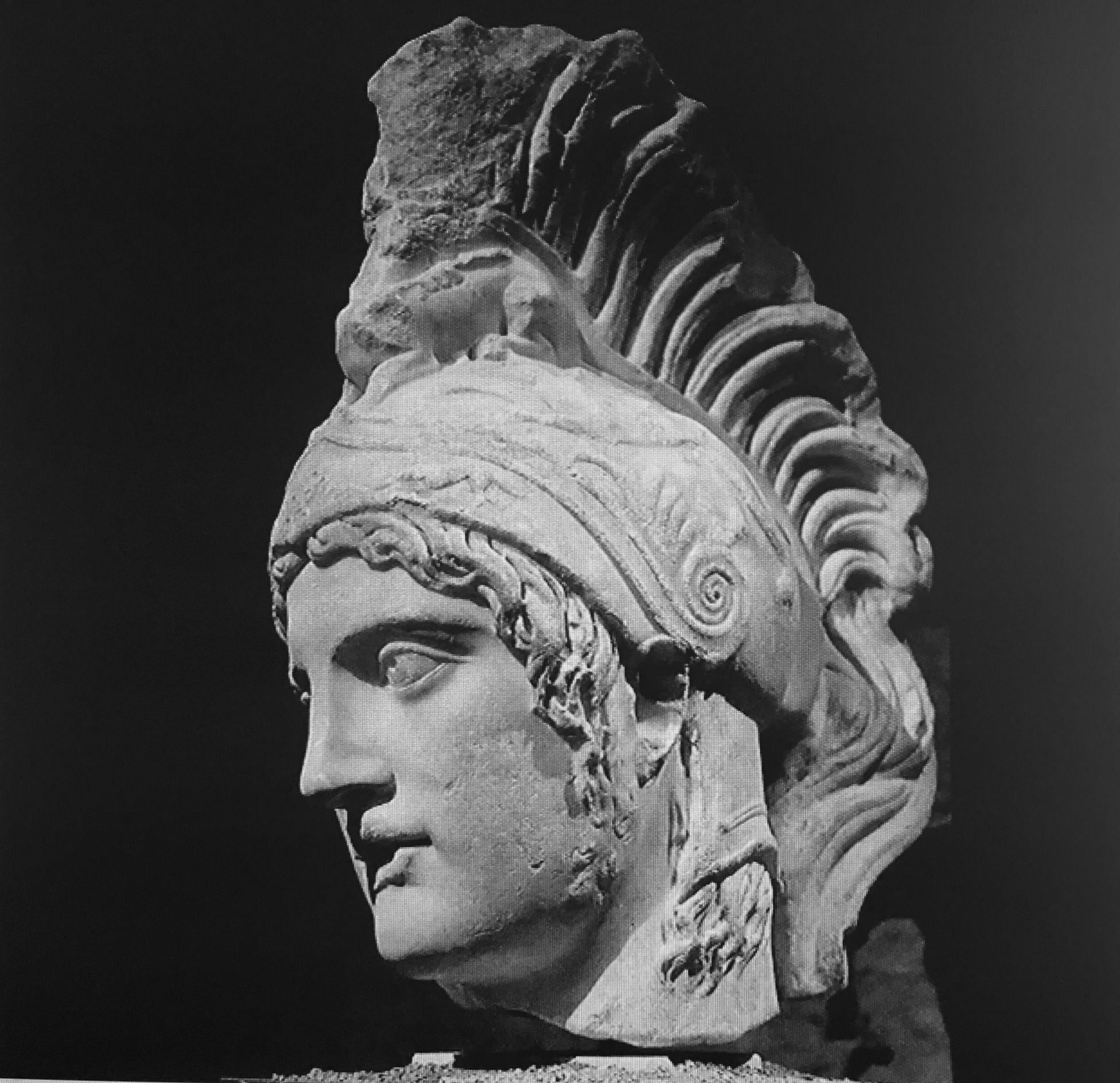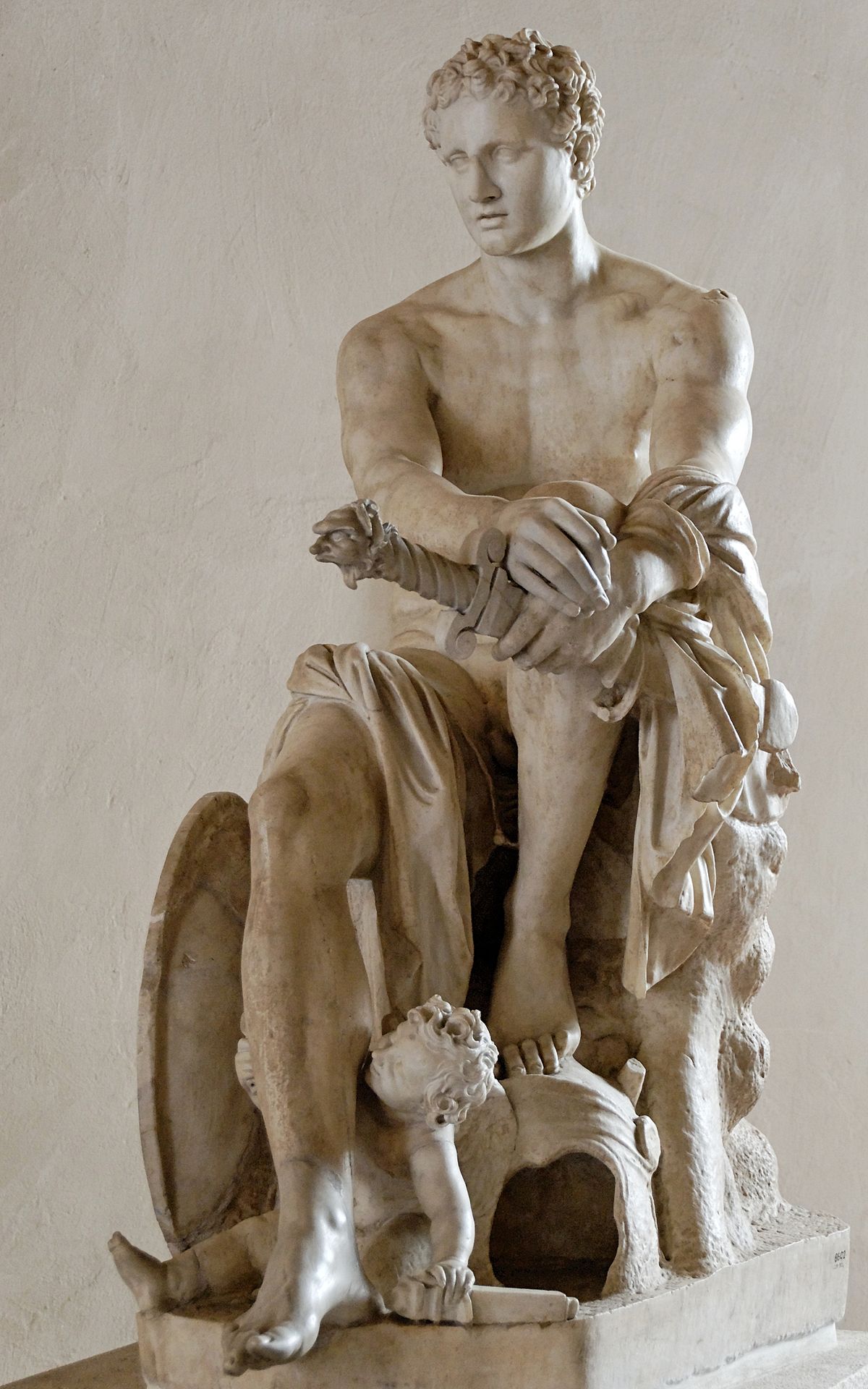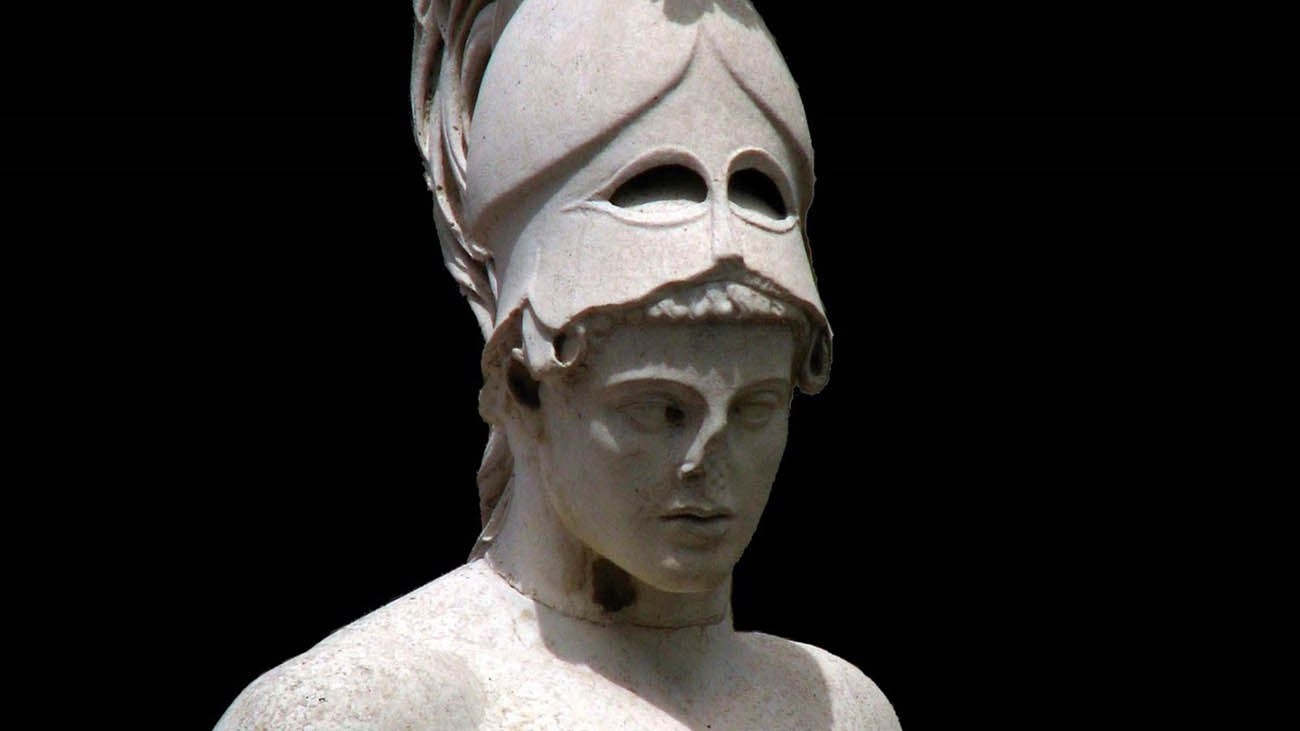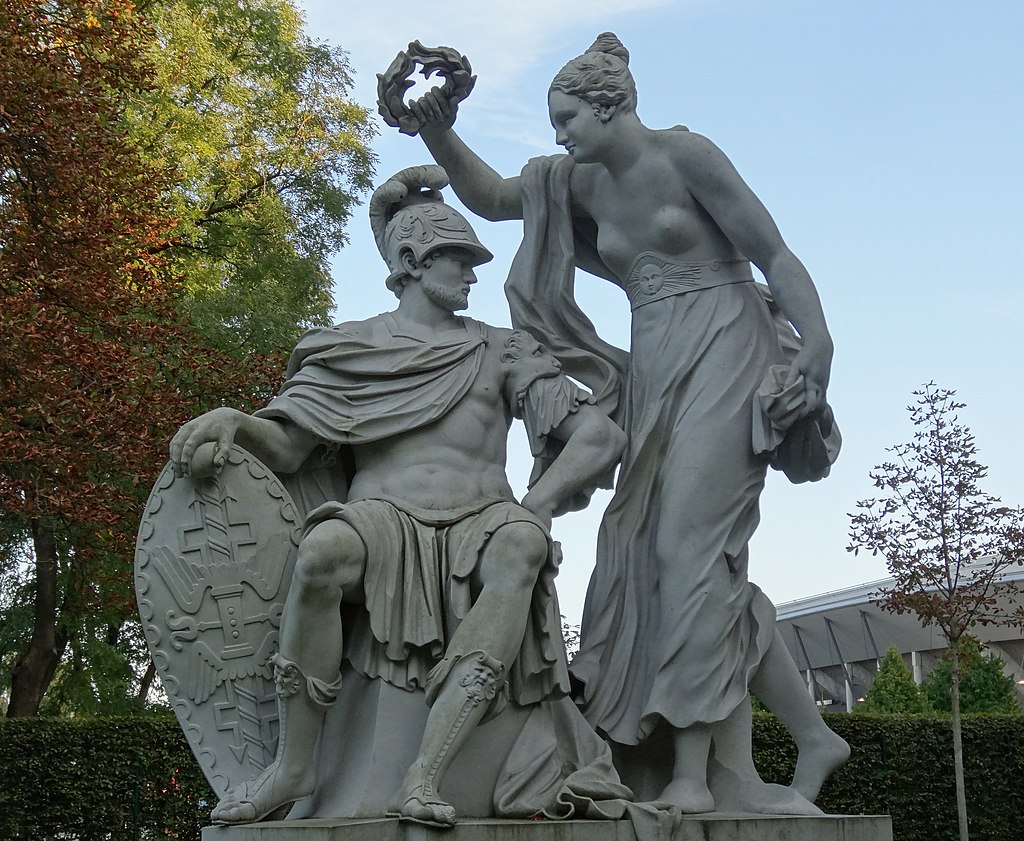We invite you to learn more about the history and importance of God Ares, one of the most representative deities of Greek mythology. He was the son of Zeus and Hera and is known for his great attributes, in addition to having had countless lovers.
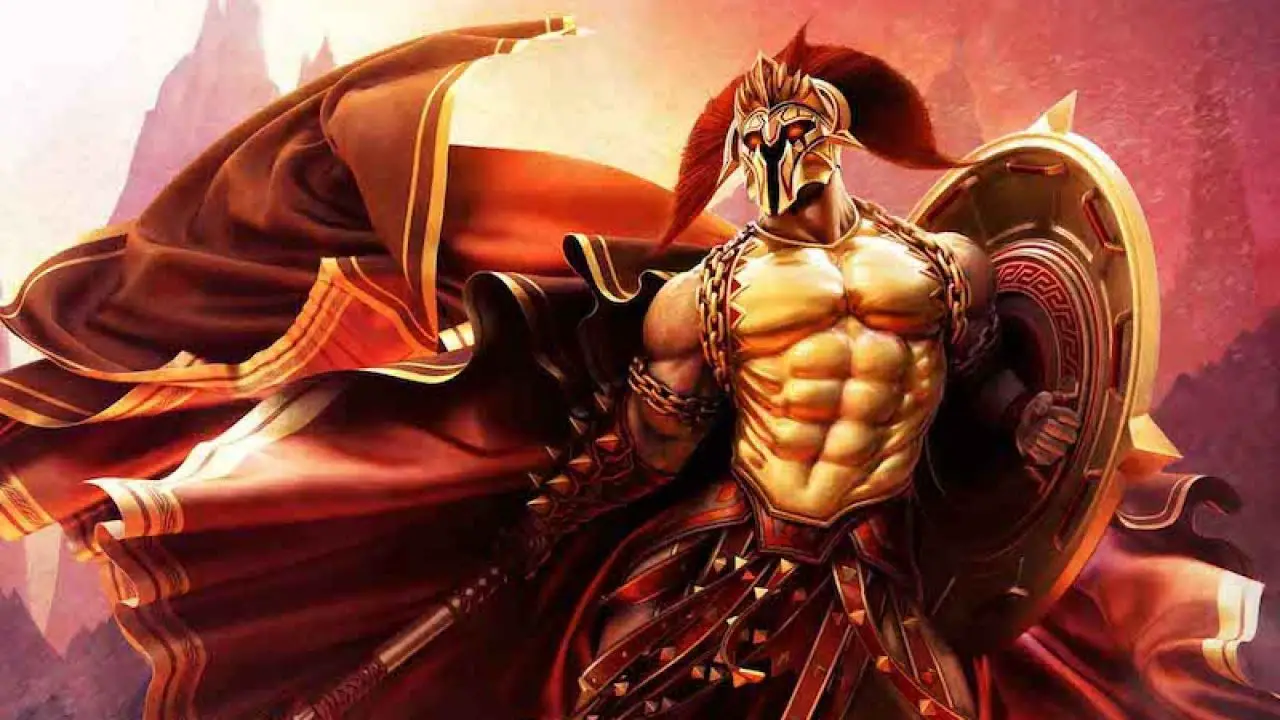
God Ares
This time we will be learning a little more about the history of one of the most important gods in Greek mythology, the God Ares, described by many as the Olympian god of war. According to history, this god was the son of Zeus and Hera and according to the Homeric hymns found, it is believed that he also had many other attributes and epithets.
The God Ares is related to interesting attributes such as courage, tireless strength, as well as being the king of masculine virility, protector of the Olympian and armies, leader of the rebels, of men together and helper of the weak. Simply put he was a god with great attributes going for him.
The Olympian god of war, as the God Ares was also known, had other attributes related to war. He represents the bravery, gallantry and violence of wars. Being the god of male virility, throughout mythology there have been countless female lovers attributed to him, approximately thirty.
About 60 children arose from these relationships, among whom it is worth mentioning some such as Eros, Harmonia, Phobos, Deimos and Amazonas. One of his favorite and most famous lovers was undoubtedly Aphrodite, considered the goddess of love and beauty. Aphrodite was the preferred lover of the God Ares, as well as being his healer and war ally. The Roman equivalent of her is Mars.
While it is true that Ares is described as a god of war, it is important to note that not all the time he wins battles. He was even injured on different occasions in the midst of conflicts. On one occasion he was wounded in his fight against the demigod Heracles. The same thing happened in his clash with his sister Athena, also a warrior divinity, patron saint of strategy and wisdom.
According to the history of the God Ares, this representative of mythology would have been born and raised in the region of the barbarians and Thracians, located north of Hellas. He lived in that place for several years, until he had to flee once he was discovered having sexual relations with Aphrodite, who was unfaithful to her husband Hephaestus on several occasions.
The God Ares had direct participation in the so-called Trojan War. He lent his strength to one side and then supported the other side, thereby trying to reward the courage of both sides. Despite being one of the most representative gods and with great attributes in his favor, he was also hated by many other gods.
The effects caused by plagues and epidemics was only evidence of the destructive power that the god Ares had. He represented only a part of his nature, violent and bloody. That attitude led him to receive the rejection and hatred of many other gods, including his own parents.
"Ares" was also an adjective and epithet in classical times to refer to other gods when they presented a warrior, violent or virile modality: the titles Zeus Areios, Athena Areia and even Aphrodite Areia were common,8 also applicable to Apollo, being in the Iliad even more ruthless and cruel than Ares himself.”
Cult
If there was a factor to highlight in the figure of the god Ares, it was precisely the devotion and worship they paid to him in many regions and territories. It is believed that the cult of the god Ares spread little by little until it occupied large areas and became one of the most important cults in mythology in history.
The cult of the god Ares extended from the Aria region, located in central Asia, to Western Europe. In poetry it had a lot of influence, which led it to become a center of worship in ancient Greece, especially soldiers and members of the army who marched to war, especially in Sparta and Macedonia, where one of its worshipers comes from. most emblematic, Alexander the Great.
According to some historical texts provided by great Greek historians of the stature of Callisthenes and Plutarch, Magnus used to worship the god Ares before participating in the different battles in which he intervened. Magno performed a series of rituals to exalt the virtues of the god Ares. The rituals consisted of libations, with the Orphic and animal sacrifices.
In the northern regions of Greece, the god Ares was also worshiped with great intensity. It was even speculated that the cult of this deity in said territory was introduced from Thrace, along with Scythia it was also one of the places where Ares received the greatest adoration. In Scythia he was worshiped in the form of a sword, with which different animals such as horses and cattle were sacrificed, even slaves were sometimes sacrificed.
The figure of the god Ares is highly important and representative for many Greek cities such as Thebes. This deity appears in the founding myth of the city, as well as in other myths. He also appears as the founder of the Amazons, where he had an altar that the Amazons dedicated to the god on an island in the Black Sea, where they kept the feathers of one of their sacred birds.
There was also speculation about the possible existence of a figure of the god Ares in Sparta. The image of the god was chained, as a sign that the warrior spirit and victory would never leave the people who lived in that city. In Sparta, they used to worship Ares with animal sacrifices, especially black dog puppies.
"In the myth of the Argonauts it was believed that in Colchis, the Golden Fleece was hung from an oak tree in a grove sacred to Ares.14 From there it was believed that the Dioscuri brought to Laconia the ancient statue of Ares that was preserved in the temple of Ares Thareitas, on the way from Sparta to Terapnas.”
Many islands were consecrated to the image of the god Ares, for example the island that was located near the coast of Colchis. In that place it was believed that the so-called Stymphalian birds lived. The island was named Ares Island in honor of the Greek deity.
Another way to worship the god Ares was through buildings. One of the most important physical structures created in honor of this Greek deity was the so-called Temple of Ares, which was observed by the historian Pausanias in the second century in the Agora of Athens, administrative, religious and cultural center.
This temple had been dedicated to the god Ares during the rule of Augustus. It basically consisted of a temple of Mars, who was the Roman representation of Ares. The renowned historian Pausanias assures that in that temple there was a figure of Ares which was apparently created by Alcámenes. In another area where Ares was worshiped, it was in the so-called Hill of Ares.
From that place the Apostle Paul issued his words. It is also known as the Areopagus and is located some distance from the Acropolis, and since archaic times trials were held there. In the archaeological site named Olympia there was also an altar where the god Ares was worshiped.
But the worship of this deity does not end there. The god Ares was also worshiped near Tegea, where he was known as Ares Afneus, even receiving worship in the city of Tegea itself, where many people bowed to the god in worship. Near the city of Tegea there was a fountain consecrated to Ares.
He also received worship in the ancient Greek city of Gerontras. In that area there was a building where there was a tradition of celebrating a festival every year that women could not access. Likewise, an Egyptian divinity named Ares was worshiped.
The cult of the god Ares was broad and very representative in different regions. There were few images or busts of the god Ares that managed to survive the effects of the wars that occurred in later times. A few monuments that allude to the god also remain in force.
The few artistic representations or monuments of the god Ares that managed to survive were archaeological finds unearthed during the previous century, also because of the order of the Roman emperors in the fourth century AD. C to make the Greek deities and other creeds disappear as much as possible.
Over the years, new finds related to other gods have come to light, including new figures of the god Ares. Among the finds stand out busts, statues, coins, reliefs and jewels. Many of these works found are copies of originals by the Athenian sculptor Alcámenes.
Symbols and appearance
In most cases the god Ares is described as a young man, who had a particular way of wearing his hair. The well-known anastale hairstyle was made, widely popular among men in ancient Greece. It was also a hairstyle typical of Hellenic warriors. The god Ares adopted this tradition and usually wore his hair in the same way.
There are also other physical aspects of the appearance of the god Ares that are worth noting, for example his hairless face and body. The Greek deity had many symbols that characterized him and differentiated him from the rest of the gods of the time, for example the chariot and a lit torch that always accompanied him to all the places he frequently attended.
According to what history indicates, Ares used to ride in a chariot, accompanied by four powerful horses that had the ability to expel fire. There were many elements that made the god Ares stand out from the other Greek gods of the time. One of the most representative elements of Ares was his bronze armor, in addition to his characteristic sword. All those implements were part of the appearance of the god Ares.
It is also important to mention some of the sacred animal symbols that were part of the god Ares. The sacred birds of this deity are the so-called woodpeckers and especially the vultures. In the famous work the Argonautics, special mention is made of the sacred birds of Ares.
In that text it is ensured that the birds of Aires were a group of birds that had the power to launch darts through their plumage and thus attack the enemy forces. But the birds were not the only animals that were part of the representation of the god Ares. There was also the dog, described as his favorite animal. The god Ares is also identified with the two horns by the myth of the Golden Fleece, the ram of golden wool.
Titles and epithets
Throughout history there were many titles and epithets that the god Ares received to be identified. One of the most common epithets of Ares was that of Enialio, who can be identified as a heroic warrior. This epithet used to be applied to the ephebes in Athens, who were the young people who entered the military service, as well as being a type of heroic cult during their oath.
But Enialio was also the name given to one of the sons that the god Ares had with the goddess Enio. By classical times Enialius had been identified as a hero. But that was not the only common epithet for Ares. There are also others like:
- Brotoloigos (Βροτολοιγός, 'destroyer of men');
- Aphrodisiacs (Αφροδισιακος, 'enchanted by Aphrodite')
- Androphontes (Ανδρειφοντης, 'killer of men');
- Miaiphonos (Μιαιφόνος, 'the voice of men');
- Enyálios (Ἐνυάλιος 'warrior hero')
- Teikhesiplêtês (Τειχεσιπλεικτης, 'wall-raider');
- Maleros (Μαλιωρας, 'sorcerer, shaman');
- Teritas (Θηρίτας, 'pacified'), by Tero, his nursemaid and healer
Mythology
Within Greek mythology, the god Ares is one of the most important and influential representative figures. His name was involved with many Greek characters that we will try to review in this part of our article. His name appears reflected in countless works and historical texts, where he is recognized as one of the most important gods in history.
Afrodita
The god Ares was involved with many other characters in Greek mythology. One of those characters was Aphrodite, described as the goddess of sensuality and love. In the story sung by the poet Demodocus, it is indicated that on one occasion the sun god Helios surprised Ares having secret sexual relations with the goddess Aphrodite, who was married at the time.
Both made love secretly in the rooms of Aphrodite's husband, Hephaestus, the lame and hunchbacked god of fire. The sun god Helios, after discovering that Aphrodite was unfaithful to her husband, did not hesitate and ran to warn Hephaestus about everything that was happening with his wife.
As expected, Hephaestus, the god of fire, was furious with the news of his wife's infidelity and began to organize a plan to take revenge against the god Ares and his wife. He made an invisible net, but so strong and resistant that no man or god could break it, that he could immobilize anyone in order to capture the couple.
Hephaestus proceeded to install said net on the bed where Ares and Aphrodite used to have their sexual encounters. The god of fire left his house and would return the next day at sunrise. Ares, avoiding being discovered, installed his Alectrion guard at the main door of the house so that he will inform him when the sun rises (Helios).
However, the young man did not do his job of guarding the area, on the contrary, sleep overcame him and he fell asleep, and with the first glimpses of the sun the net fell on the pair of lovers. This is how Hephaestus was able to capture the couple in the middle of the sexual act, leaving them immobilized.
The god of fire, Hephaestus, no longer had any doubts about his wife's infidelity and proceeded to communicate with the other gods so that they could witness the adultery that was taking place. The gods heeded Hephaestus's call, however the goddesses preferred not to attend out of modesty.
For their part, the gods, instead of getting angry with the infidelity, what they did was praise the physical beauty of the goddess Aphrodite, and that they would have gladly changed the place of Ares, making fun of Hephaestus. Once the cheating couple was released, Aphrodite fled to Paphos, her native island of Cyprus. For his part, the god Ares hid in his native Thrace.
The god Ares could not believe everything that was happening because of his trusted guard Alectrion, who had fallen asleep and because of him they had discovered him sleeping with Hephaestus's wife. Furious at the guard's attitude, he did not think twice and proceeded to transform Alectrion into a rooster that would never forget to announce the arrival of the sun in the morning.
After being caught in bed, Aphrodite and the god Ares had promised never to meet intimately, however both did not resist their carnal desires and violated that pact. They had several encounters repeatedly, always secretly.
This exciting story of love, infidelity and revenge was represented in sculptures and paintings, especially in the Renaissance period. As a result of their love they had at least eight children, including Cupid (Eros).
Ares chained
In a myth recounted in the Iliad by the goddess Dione to Aphrodite, the episode is narrated in which the god Ares is chained by the Alóadas, as the twins of Greek mythology Oto and Ephialtes were called. These brothers proceeded to arrest Ares, chain him up, and lock him in a bronze urn for an entire lunar year.
The story tells that the god Ares was kept chained and locked up for several months and during his captivity in the bronze urn, he did nothing but scream and howl for help. His screams caused effects, as his brother Hermes heard him and ran to rescue him. Ares's sister, Artemis, tricked the giants into throwing their spears at each other, killing each other.
«There the insatiable god of combat would perish, if his stepmother [of the Alóadas], the beautiful Eribea, had not participated in Hermes».
"In this one suspects a festival of debauchery that breaks out in the thirteenth month."
The Trojan War
In the work The Iliad, reference is also made on several occasions to the participation of the god Ares in important confrontations, such as the Trojan War. Homer recounts that Ares initially fought for one side and then collaborated for the other to reward the courage of both sides.
Ares had to intervene on both sides that participated in the Trojan War. He had made the promise to his sister Athena and his mother Hera that he would fight in favor of the Achaeans together with Achilles, however later the goddess Aphrodite and Apollo convinced him to join the side of Paris and the Trojans, where they also had participation. . This is how the god Ares fought on both sides, so as not to disappoint anyone.
During the confrontation, Diomedes was astonished to see the god Ares battling on behalf of the Trojan side and proceeded to order his soldiers to retreat. Hera saw the disproportion of the combat and asked Zeus to intervene to remove him from the battlefield. After that, Ares attacked Diomedes with his spear.
Athena took it upon herself to change the course of the attack. For his part, Diomedes did not sit idly by and also offered his response to the attack. Athena directed the blow to attack the god Ares, who fell wounded. After being injured, he escapes to Mount Olympus where his father was looking for help. Ares's father heals her wounds.
"Looking at him darkly, Zeus, who collects the clouds, spoke to him: -Do not sit next to me and complain, you two-faced liar! To me you are the most hateful of all the gods who support Olympus! Always a fighter, it's what you want for your heart, wars and battles!...
And yet, I will not bear much to see you in pain, since you are my child… And for me it was your mother who bored you. But if you were born from some other god, you turned out to be so ruinous! It's been a long time since you'd been dropped below the bright sky gods!"
The cry of Ares
There is also evidence of a god Ares sad and crying, at least that is what Hera lets us know in the Iliad. She recounts that on one occasion she told Zeus that the son of the god Ares, Ascalaphus, had died and when he heard the terrible news, he broke down in tears. He tried to join the battle on the side of the Achaeans, against Zeus's order that no Olympians were to intervene in the war.
Athena restored her relationship with Ares and helped lift his spirits and remove all bitterness from him. Later, when Zeus gave the order for the gods to intervene in the mortal war, the god Ares tried to take revenge on Athena, however he ended up being injured again when she hit him with a stone, covering the fall with her body lying seven yugadas.
Once the stone hit the god Are, he killed Iliad and sent him to rule his homeland, Thrace, a land of wisdom.
Helpers
Allies were never lacking in the life of the god Ares. One of the people who was always there to offer advice and help was Themis, an important goddess of justice and the correct order of things. In addition to her, there were also other outstanding helpers, for example in battles, Deimos and Phobos are two of her children with Aphrodite and also the spirits of fear and fear, respectively. They also accompanied him in wars.
Another person who helped him was his sister and faithful companion, Enio, named after the goddess of bloodshed and violence. Ares's presence was also followed by Cidoimos, the daimon of the riot of battles, as well as the Macas (Battles), the Hisminas (Disputes), Polemos (a lesser spirit of war) and his daughter, Alala.
Alala was a faithful companion of the presence of Ares. She is considered to be the personification goddess of the Greek war cry and her name was used by Ares as his own war cry. In the confrontations that took part, Ares was accompanied by his sister Eris, inciting the soldiers to battle.
Another of his sisters who used to accompany him was Hebe, however she did not follow him to battles, but was the main person in charge of preparing the bath for the god Ares.
“By way of etymological construction, the word phobia comes from Phobos. They have an appointment in astronomy, which has given these names to his sons, Phobos and Deimos, to name the two satellites of the planet Mars (where Ares was so called in Rome).
The foundation of Thebes
One of the most important participations of the god Ares had to do with his presence in the founding myth of Thebes. This Greek deity was the progenitor of the aquatic dragon that Cadmus killed, becoming the ancestor of the Spartans, because from the dragon's teeth a race of warriors descended from Ares, the Spartans, sprouted as if a crop.
In order to calm the god Ares, Cadmus married Harmonia, who was one of the daughters Ares had with his lover Aphrodite. In this way the conflict that existed between the two was resolved and they proceeded to found the city of Thebes.
Other myths
- In Typhon's contest with Zeus, Ares was forced, along with the other gods, to flee to Egypt, where he metamorphosed into a fish.36
- Ares gave Hippolyta the belt which was later taken from her by Heracles.37
- In some versions it was said that when Aphrodite loved Adonis, a jealous Ares transformed himself into a boar and killed his rival or sent the boar to kill him.38
- According to a tradition, Ares killed Halirrotio, son of Poseidon, when he tried to rape Alcipe, his daughter with Agraulo. Poseidon demanded of Zeus that Ares be punished, for which he was put on trial: the first murder trial in history. The other Olympians voted that he should be acquitted. It is believed that this event gave rise to the name "Areopagus"
Consorts and offspring
It is no secret to anyone that the god Ares was one of the characters in Greek mythology who had the most offspring among the twelve Olympians. Throughout his existence he was characterized by having countless love relationships with many women and in most of them he procreated children.
As the patron of male virility, the god Ares had more than forty lovers and approximately 60 children, most of them eponyms of mythical cities. Some of the lovers that Ares had and part of his offspring are highlighted below.
With Aphrodite he had a total of eight children, including Phobos, Deimos, Harmonia, Adrestia, Eros, Anteros, Himeros and Pothos. Another of his lovers with whom he procreated was Aglauro, a relationship that brought Alcippe as a fruit. Some of his most important lovers were the following, in addition some of his main children are named:
- Altea – Meleager
- Anchiroe–Siton
- Astioque – Ascálafo and Lalmeno
- Atalanta–Parthenopeus
- Caldene–Solymus
- Calliope – Migdon, Edonus, Bistón and Odomanto
Hymns to Ares
Below are excerpts from two Hymns that were dedicated to the god Ares. One of them was written in the Greek era, the seventh century before Christ, while the second text is part of the Greek hymns from the third century before Christ to the second century after Christ.
Homeric Hymn VIII to Ares (trans. Evelyn-White) (Greek epic, XNUMXth century BC)
«Ares, with the enormous strength, charioteer, golden shield, heart of deeds, carrier of shields, savior of cities, armed in bronze, strong arms, tireless, powerful with the spear. O defender of Olympus!
Warrior father of Victory, ally of Themis, stern ruler of the rebels, leader of just men, king of manhood, who turns your fiery sphere between the planets on its seven paths through the ether where your fiery steeds hold you for above the third firmament of heaven.
Hear me, helper of men, giver of a fearless youth! Cast a kind ray from above on my life and the force of war, so that I can drive away the bitter cowardice from my head and crush the deceitful impulses of my soul, also restrain the sharp fury of my heart, which induces me to tread the paths of the fights that curdle the blood.
O blessed! Give me the audacity to abide by the harmless laws of peace, avoiding conflict and hatred and the violent demons of death."
Orphic Hymn LXV to Ares (trans. Taylor) (Greek hymns, XNUMXrd century BC to XNUMXnd century AD)
«To Ares, consecrate him with incense, magnanimous, undefeated, boisterous, with darts of joy, and in bloody wars; ferocious and untamed, whose power shakes the strongest walls from their foundations: king destroyer of the dead, stained with blood. pleased with the hideous and tumultuous roar of war.
Your human blood, and swords and spears revel, and the ruin of mad and savage fighting. Be furious and vindictive, whose deeds toil in the bitterest human life; to the lovable Kyrpis [Aphrodite and Lyaios [Dionysius] they cede, for the exchange of arms, the work of the fields; they encourage peace, to gentle labors, and give plenty, with benign minds.”
Ares in the Renaissance
The god Ares was an important part of the era known as the Renaissance. During that period, the symbols of this god are a spear and a helmet, his animal is the dog and his favorite bird is the vulture. He is also reflected in many of the literary works of the time, where he is depicted as a violent and bloody man.
cult today
Despite the time that has passed, today the cult of the god Ares continues to exist in many territories, especially through certain sectors of Hellenism. It is a purely religious movement that is responsible for worshiping different deities and traditions that were pioneers in Ancient Greece at the time.
Ares and Aphrodite in art
In this part of our article we are going to share some artistic representations of the god Ares and his lover Aphrodite. Many of these works of art were famous and some are preserved to our present times.
You might also be interested in the following articles:

